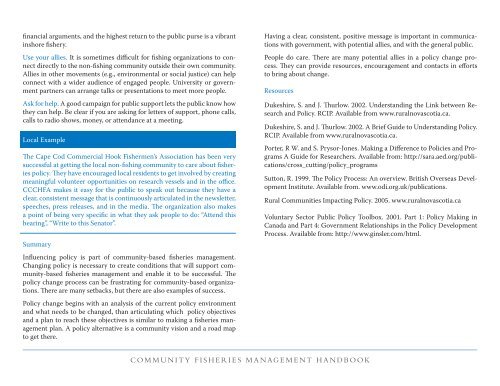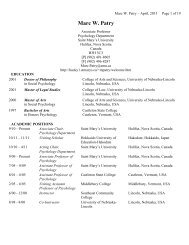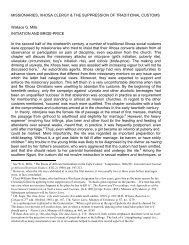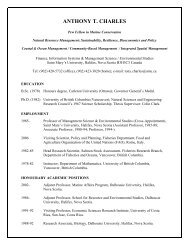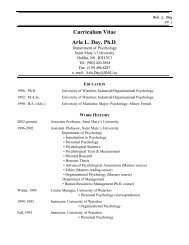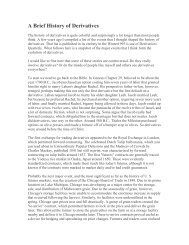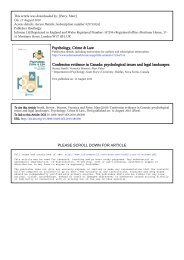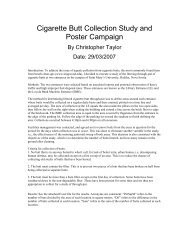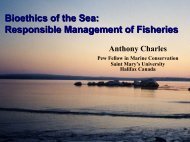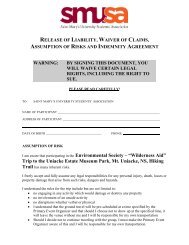Community Fisheries Management Handbook - Saint Mary's University
Community Fisheries Management Handbook - Saint Mary's University
Community Fisheries Management Handbook - Saint Mary's University
You also want an ePaper? Increase the reach of your titles
YUMPU automatically turns print PDFs into web optimized ePapers that Google loves.
financial arguments, and the highest return to the public purse is a vibrant<br />
inshore fishery.<br />
Use your allies. It is sometimes difficult for fishing organizations to connect<br />
directly to the non-fishing community outside their own community.<br />
Allies in other movements (e.g., environmental or social justice) can help<br />
connect with a wider audience of engaged people. <strong>University</strong> or government<br />
partners can arrange talks or presentations to meet more people.<br />
Ask for help. A good campaign for public support lets the public know how<br />
they can help. Be clear if you are asking for letters of support, phone calls,<br />
calls to radio shows, money, or attendance at a meeting.<br />
Local Example<br />
The Cape Cod Commercial Hook Fishermen’s Association has been very<br />
successful at getting the local non-fishing community to care about fisheries<br />
policy. They have encouraged local residents to get involved by creating<br />
meaningful volunteer opportunities on research vessels and in the office.<br />
CCCHFA makes it easy for the public to speak out because they have a<br />
clear, consistent message that is continuously articulated in the newsletter,<br />
speeches, press releases, and in the media. The organization also makes<br />
a point of being very specific in what they ask people to do: “Attend this<br />
hearing”, “Write to this Senator”.<br />
Summary<br />
Influencing policy is part of community-based fisheries management.<br />
Changing policy is necessary to create conditions that will support community-based<br />
fisheries management and enable it to be successful. The<br />
policy change process can be frustrating for community-based organizations.<br />
There are many setbacks, but there are also examples of success.<br />
Policy change begins with an analysis of the current policy environment<br />
and what needs to be changed, than articulating which policy objectives<br />
and a plan to reach these objectives is similar to making a fisheries management<br />
plan. A policy alternative is a community vision and a road map<br />
to get there.<br />
Having a clear, consistent, positive message is important in communications<br />
with government, with potential allies, and with the general public.<br />
People do care. There are many potential allies in a policy change process.<br />
They can provide resources, encouragement and contacts in efforts<br />
to bring about change.<br />
Resources<br />
Dukeshire, S. and J. Thurlow. 2002. Understanding the Link between Research<br />
and Policy. RCIP. Available from www.ruralnovascotia.ca.<br />
Dukeshire, S. and J. Thurlow. 2002. A Brief Guide to Understanding Policy.<br />
RCIP. Available from www.ruralnovascotia.ca.<br />
Porter, R W. and S. Prysor-Jones. Making a Difference to Policies and Programs<br />
A Guide for Researchers. Available from: http://sara.aed.org/publications/cross_cutting/policy_programs<br />
Sutton, R. 1999. The Policy Process: An overview. British Overseas Development<br />
Institute. Available from. www.odi.org.uk/publications.<br />
Rural Communities Impacting Policy. 2005. www.ruralnovascotia.ca<br />
Voluntary Sector Public Policy Toolbox. 2001. Part 1: Policy Making in<br />
Canada and Part 4: Government Relationships in the Policy Development<br />
Process. Available from: http://www.ginsler.com/html.<br />
C O M M U N I T Y F I S H E R I E S M A N AG E M E N T H A N D B O O K


